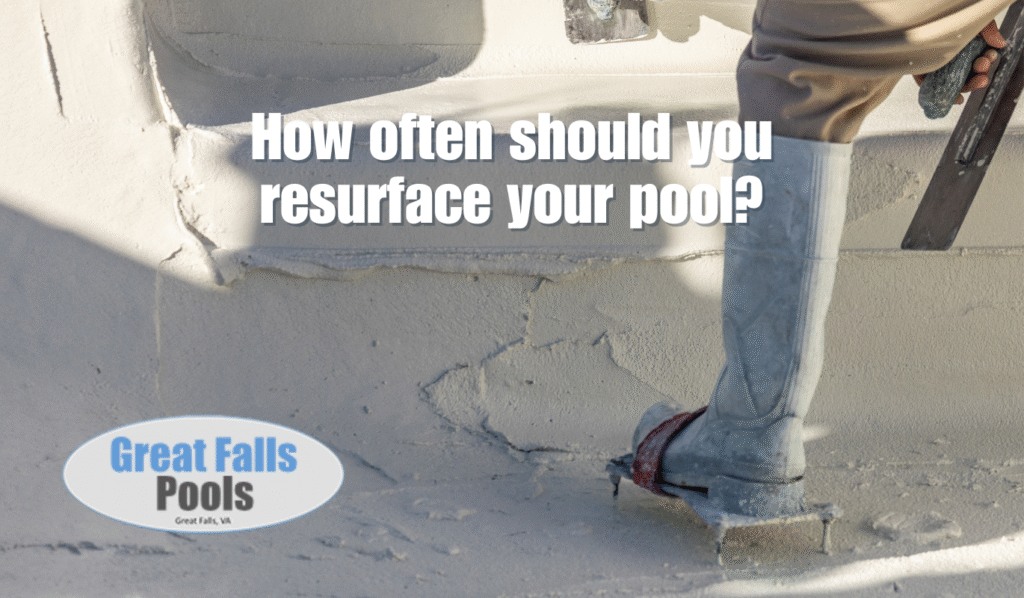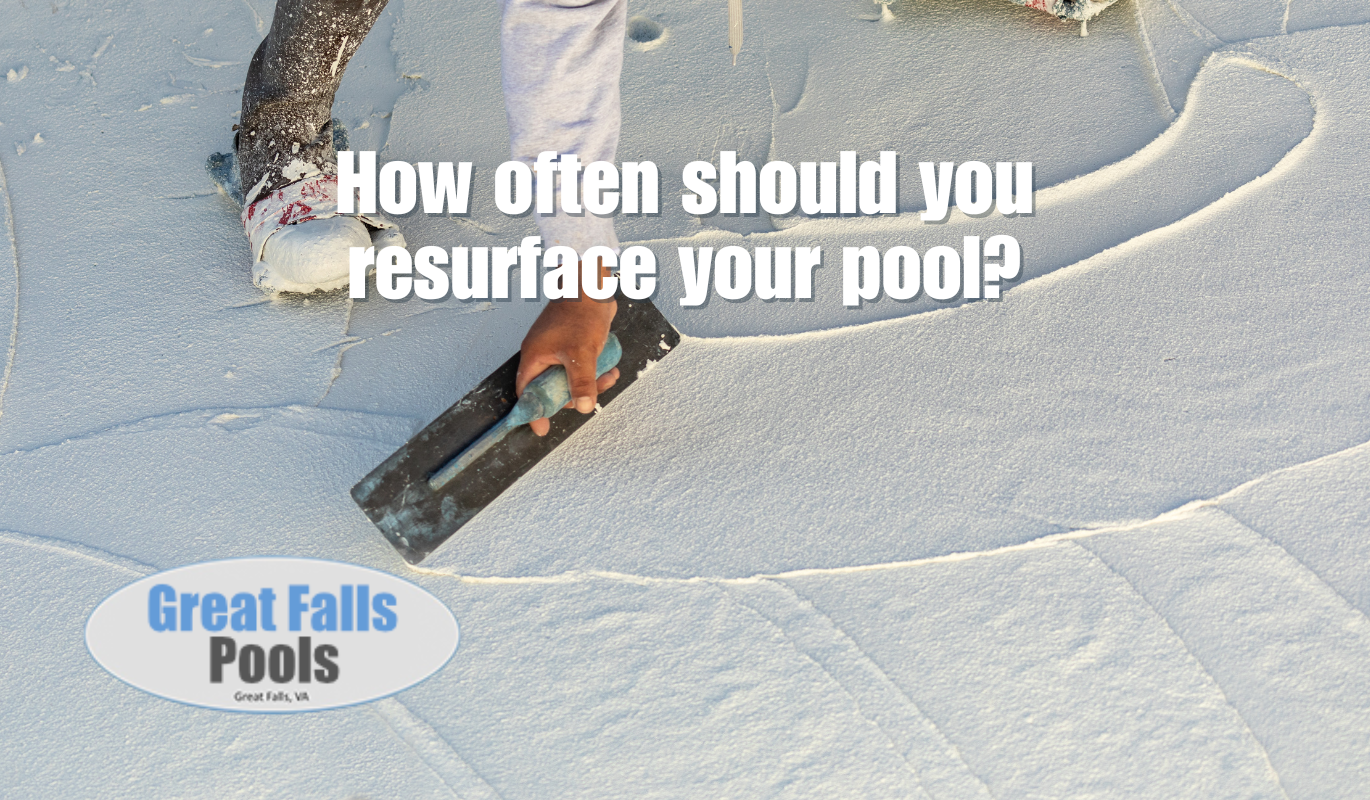If you own a swimming pool in Virginia, Maryland, or Washington, DC, you’ve likely wondered: How often should you resurface your pool? Whether your pool is brand new or decades old, resurfacing is one of the most important maintenance tasks you’ll face.
In this article, we’ll help you make an informed choice about resurfacing and choosing the right finish for your pool. We’ll also walk through how each type of surface affects durability, appearance, and longevity.
What Does Pool Resurfacing Involve?
The “interior finish” refers to the material that coats the walls and floor of your pool below the tile line. For in-ground gunite pools, this typically includes plaster, tile, quartz, or pebble finishes.
Over time, even the best-maintained pools can suffer from mineral buildup, cracks, staining, and rough patches. Resurfacing not only restores beauty but also protects your pool from long-term damage.
So, how often should you resurface your pool? It depends on the surface type, climate, and how well you’ve kept up with maintenance.
Here’s a closer look at your resurfacing options.
Standard Plaster Finish
This is the classic choice—affordable, smooth, and widely used. Standard plaster is made from white cement and crushed marble. It gives pools a soft, light blue color and a clean, timeless look.
- Resurfacing timeline: Every 5 to 7 years
- Pros: Cost-effective, smooth feel
- Cons: Prone to staining, etching, and discoloration over time
Plaster is considered a “soft” finish, meaning it’s more vulnerable to pool chemistry issues. Over time, imbalanced pH or hard water can lead to surface damage. To help combat this, additives like pozzolans or silicon can be included to strengthen the plaster.
Colored plaster is also an option, but be aware—it’s known for inconsistencies like streaks, mottling, and fading. If you choose colored plaster, expect a more natural, varied appearance over time. Many pool owners love this look, but it’s not for everyone.

Quartz Finish
Quartz finishes offer a great middle ground. They’re made by replacing the sand in standard plaster with crushed quartz, a much harder and more durable material. The result is a vibrant, smooth surface that lasts longer than plain plaster.
- Resurfacing timeline: Every 10 to 15 years
- Pros: Durable, vibrant, smoother than pebble
- Cons: Slightly more expensive than plaster
After application, the top layer of quartz plaster is stripped away with water to expose the crushed quartz, giving the finish added texture and strength. You can also mix in colored quartz to create beautiful effects without the fading issues that colored plaster often brings.
Pebble Finish (Aggregate)
Pebble finishes are the luxury option. These are considered aggregate surfaces, made from small polished stones hand-troweled into a plaster base. As the plaster cures, the top layer is sprayed off to expose the smooth stones beneath.
- Resurfacing timeline: Every 15 to 20 years
- Pros: Extremely durable, unique textures and colors
- Cons: Higher upfront cost, slightly rougher texture
Pebble finishes are visually striking, with water color that changes subtly based on depth and lighting. You can choose from different stone sizes, colors, and even mix in elements like glass beads or abalone shell for extra sparkle.
Despite the higher cost, many homeowners find the long life span and beauty of pebble finishes well worth the investment.
Can You Resurface Your Pool Yourself?
Technically, sure—but should you? Definitely not.
Resurfacing a pool requires training, precision, and specialized equipment. It’s not just about mixing and applying materials. Incorrect resurfacing can lead to major issues like peeling, uneven color, bond failure, and expensive repairs.
Hiring professionals ensures the job is done right the first time. It also saves time, stress, and long-term headaches.
So, How Often Should You Resurface Your Pool?
Here’s a quick cheat sheet:
- Standard plaster: Every 5 to 7 years
- Quartz: Every 10 to 15 years
- Pebble/aggregate: Every 15 to 20 years
- Fiberglass (for reference): Every 20 to 30 years
Keep in mind that environmental factors, chemical balance, and pool usage all affect this timeline. Watch for warning signs like:
- Flaking or chalky surfaces
- Persistent stains
- Exposed gunite
- Rough texture
- Color fading
If you see any of these, it’s time to act.
Trust Great Falls Pools With Your Resurfacing Project
At Great Falls Pools, we specialize in pool resurfacing throughout Virginia, Maryland, and Washington, DC. Whether you want a classic plaster finish or a top-tier pebble surface, we’ve got the experience to make it happen.
Want to see where we’re located? Find us on Google Maps.
Need expert advice or ready to schedule your resurfacing consultation? Contact us today and speak with one of our experienced professionals.
Choosing the right interior finish is a big decision—but you don’t have to make it alone. We’re here to help every step of the way.




Leave a Reply